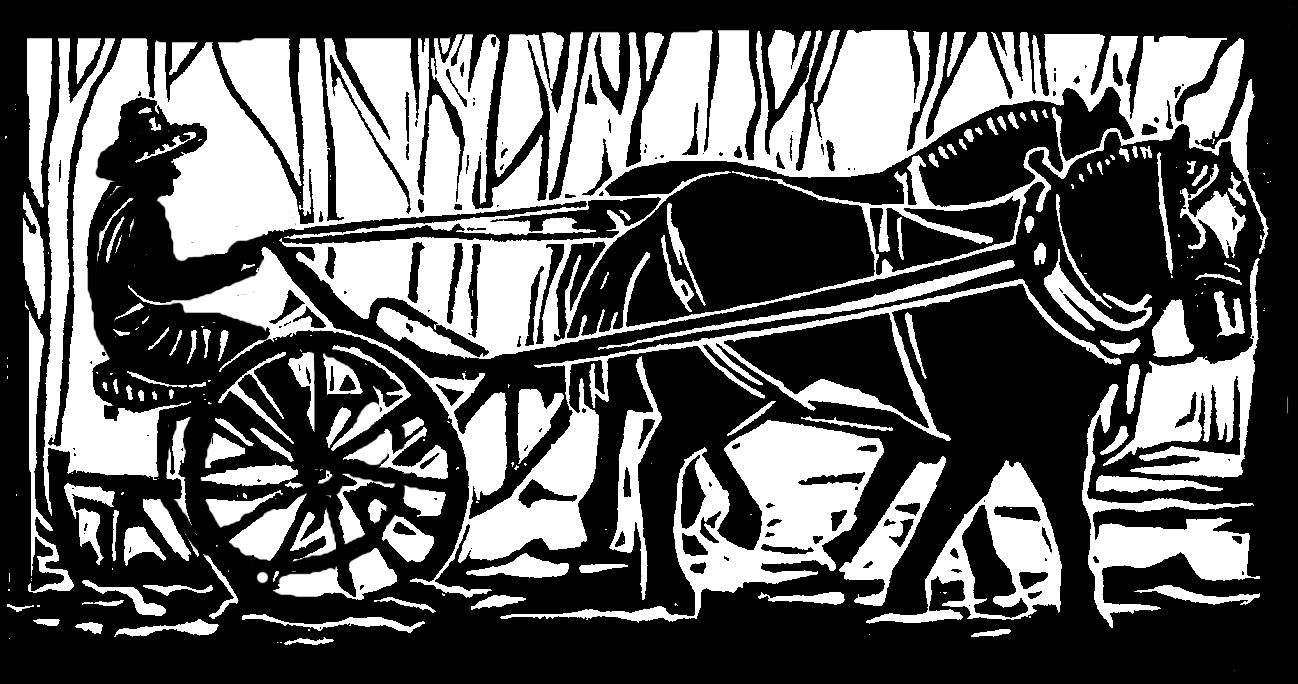We practice slow farming here on our New Hampshire place. We have less than three acres in vegetables, and we plow, disc, cultivate, and make loose hay at the speed of Belgian and Percheon horses and antique horse machinery. We plant and harvest kind of slowly too, at the speed of two well- past-youth farmers and antique tools.
Of course, we do have some fine modern items on the farm: our sturdy plastic harvest crates, our recently installed irrigation system, our electric fence around the garden. Plus, when it comes to winter farm paperwork, we have this fine new item: a computer!
It took us a while to get to the computer. In the beginning, we went down to our little local library for an hour every Thursday to use their computer. It was kind of nice having computer work restricted to one day a week, but it was also kind of hard to get all the computer work done in an hour, particularly when a farmer forgets to bring half the things she needs to the library in order to achieve her computer work.
Gradually, we began to acquire home computers, since we aren't very fussy about how old or slow they are. Friends, CSA members, mothers, sisters, all kind of fine folks, have given us computers and printers, too. As one friend said a few years ago, “Wow, that's great! You're in the '90s now!”
Next one of our creative, savvy CSA members made us a website in exchange for a share of vegetables. We've had the website now for 7 or 8 years, but we slow farmers are still amazed when people look at our website, and then send us a check in the mail.
“But they don't even know us!” we say. “They haven't even talked to us on the phone! What if we're a big hoax? What if we don't have a farm at all?”
At this last, we fall about laughing, in the middle of our hoax horses and horse machinery and garden tools and greenhouses and fields.
Once we had the website, we soon realized that posting pictures of our hoax farm would be a lot easier with a more modern camera. Our trusty 35 mm film camera finally gave up the ghost, so we borrowed a digital camera from another sterling CSA member to take farm pictures. The camera came complete with instructions on how to firmly grip the battery cover in order to function, as the camera had been repeatedly dropped by small children. We are good grippers, and we gripped.
We had a technology revolution in our budget work as well. For years we scribbled numbers on scraps of paper, and then wept copious tears when we could not find the scraps, or read them if we could find them. Then we made a great leap: we found a stash of hoarded graph paper from the old days, and suddenly we had grids, column, rows! We hauled out our calculators and cross-checked our figures. Then we only wept when our calculators came up with differing opinions.
Soon yet another magnificent CSA member introduced us to the beauty of Excel spread sheets. Finally our rows and columns added up. Our waterfalls of tears were reduced to small brooks, as we discovered that formulas and numbers have nothing personal against us slow farmers.
We must admit, however, that we have not upgraded our phone technology. The idea of having a cell phone in our pockets as we plow with the horses is painful. First the cell phone would fall out of the pocket, as the farmer bangs on the machinery, and then a horse's big foot would fall on the cell phone. But even if we
were to duct tape the cell phone to our bulging well-past-youth farmer biceps, the real truth is that the idea of having a cell phone at all is painful. We want to be quietly with our horses and our machinery banging or with our carrot weeding and our bird singing.
Plus our phone land line is so ingeniouly configured that we hate to give it up. We have two phones connected together, each of which functions according to its abilities: one rings, and the other does everything else. And, gee, it was another kind and thoughtful CSA member who gave us the second phone and helped us rig it all up.
Clearly, our slow farm technological advances have been in fits and starts, but we have given each of them some thought. After all, we don't want to go too quickly into all this newfangled stuff. Best is that each fit and start has been with the help and encouragement of CSA members and friends and family. It takes a whole bunch of nice people to keep a slow farm going, even a hoax farm, and we slow farmers like that.
Originally published in the Monadnock Shopper News, February 15-21, 2017
